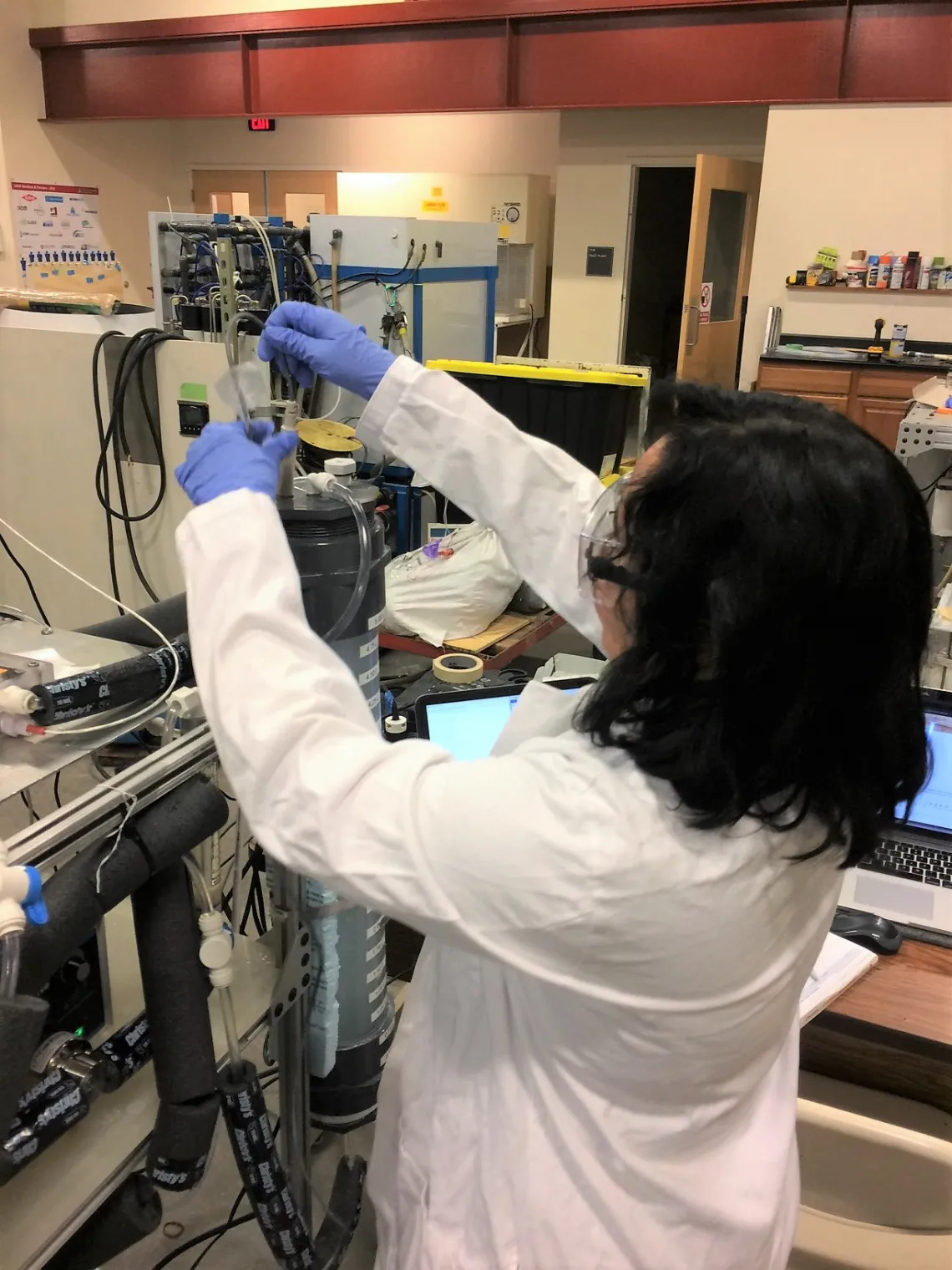Hickenbottom Projects Seek Water/Energy Efficiencies

Photo: UA student Casandra Flores works on the bench-scale membrane distillation (MD) system
This summer, WEST is fortunate to continue its relationship with Dr. Kerri Hickenbottom from the UA Chemical and Environmental Engineering Department, as well as welcome new bench-scale membrane distillation (MD) and biologically activated filtration (BAF) systems to the facility. With a focus on the water-energy nexus, Dr. Hickenbottom and her team of postdocs and students bring two new projects to WEST that seek to explore ways to 1) improve water recovery and waste minimization from inland waste streams, and 2) increase energy and water use efficiency within data centers.
Improving Water Recovery from Inland Waste Streams
In one project, funded by the Bureau of Reclamation (BOR) with Dr. Andrea Achilli and Dr. Minkyu Park, Dr. Hickenbottom’s team is exploring possibilities for minimizing waste and stabilizing organics in Reverse Osmosis (RO) concentrate from a water reuse treatment train waste stream during inland water purification processes.
As water-stressed regions continue to explore potable water reuse to augment freshwater supplies, the question of how to effectively manage inland disposal of concentrate streams still needs to be addressed. A typical membrane-based (reverse osmosis) water reuse treatment trains produces approximately 20% by volume of concentrate, and in inland regions the concentrate stream is typically handled through deep-well injection and evaporative ponds. These disposal methods are land intensive and require significant time—generally between eighteen months to two years for evaporation ponds. Furthermore, the water contained in the waste stream is lost.
With these drawbacks in mind, the study is coupling either ozone or BAF to stabilize organics and contaminants, with Membrane Distillation (MD) to remove inorganics/salts from the high-salinity stream. The researchers hope to discover how to best minimize fouling and scaling of membranes during the process, reduce specific energy consumption, and understand costs and feasibility of running a hybrid system
Increasing Energy and Water Use Efficiency within Data Centers
A second project in which Dr. Hickenbottom is involved explores the water-energy nexus within Data Centers (DCs). Working with Microsoft and the Salt River Project (SRP), this project team includes faculty from UA Optical Sciences, Architecture, and Chemical and Environmental Engineering, as well as from other Universities.
The water-energy nexus plays a critical role in DCs and cloud infrastructure. With data centers requiring an estimated 3-5% of all electricity consumed in the US and large amounts of water for cooling (i.e. 1.8 liters of water for every kWh consumed), maximizing both water and energy efficiency is an important goal. This is especially true for data centers located in arid environments, such as Arizona. While Arizona is attractive for data center location due to relatively inexpensive energy, minimal natural hazards, and the availability of a major fiber optics line for high-speed data transfer, water is a scarce resource.
The DC project is investigating multiple opportunities for cloud infrastructure to reduce their water and energy footprint by recovering and reusing blow-down water from cooling towers (internal recycling), using non-potable water as an alternative source to meet their needs, and utilizing low-grade heat or even solar energy to desalinate water. Enabling advanced treatment systems coupled with on-site and/or renewable energy technologies could substantially reduce DC’s dependency on local freshwater supplies and external/grid energy.
For more information about these and other water-energy projects at WEST Center, contact Kerri Hickenbottom at klh15@email.arizona.edu.



